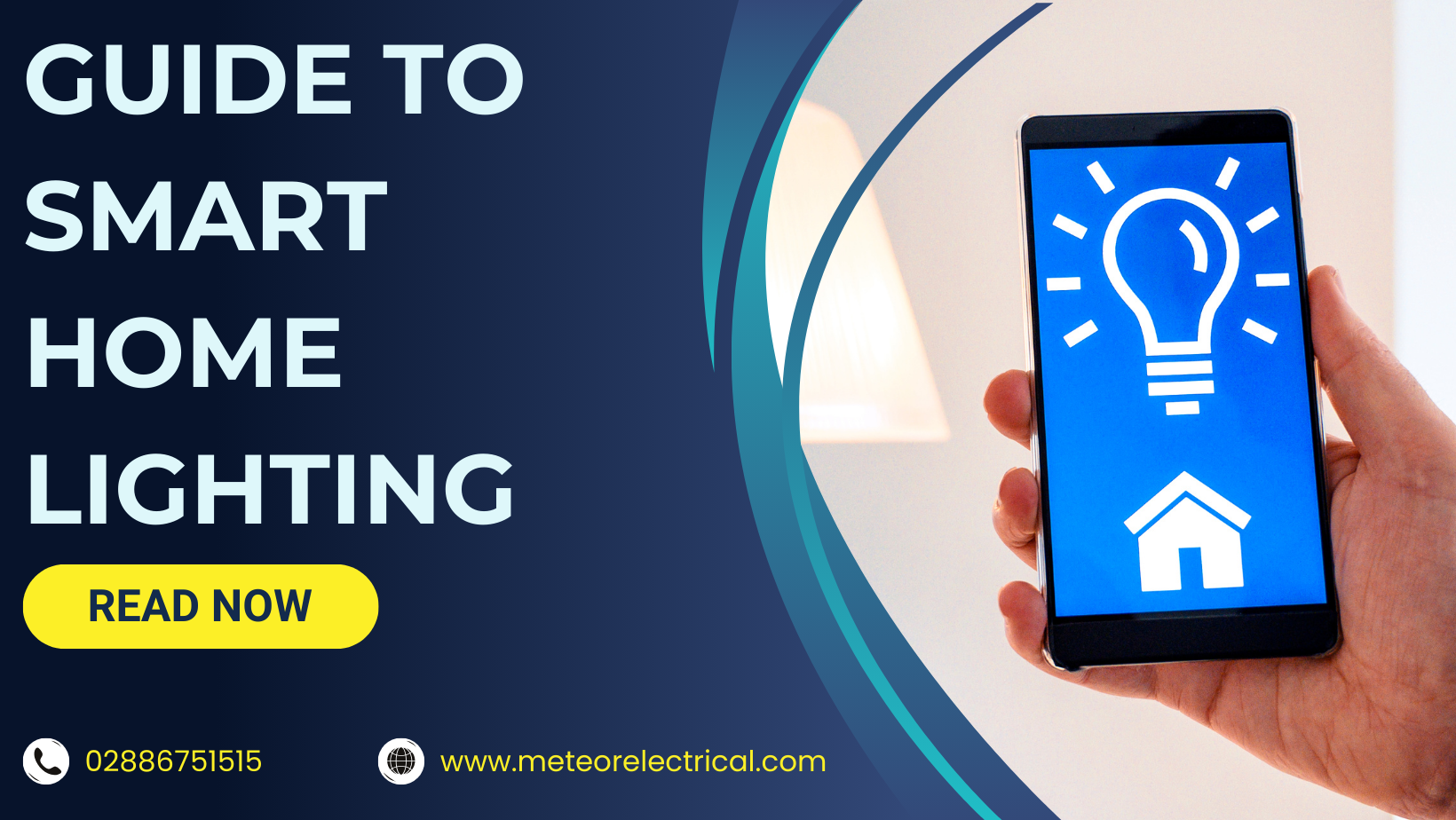Smart Home Lighting
Smart lighting is becoming increasingly popular in our everyday lives, and many people are starting their smart home journey with smart lighting. These innovative lighting solutions add even more functionality to ordinary lights and help you save energy costs in the long run.
Apart from energy costs, smart lights have many more benefits. However, some people might find the process of installing such lights complicated and expensive. With this guide, you will learn everything there is to know about smart lighting and how to start building your dream smart home.
What Is Smart Home Lighting?
To get an idea of how smart home lighting works, it is important to under what is smart home lighting. The global market for smart lighting is experiencing a boom. Currently, the global market size for smart lighting was estimated to be worth 10.9 billion USD in 2021. This number is expected to reach a value of 27.7 billion by 2026.
The term smart appliances and devices refer to self-monitoring, analysis, and reporting technology; with smart technology, your lighting increases its level of functionality and scope.
At its most basic form, smart lighting solutions allow handheld remote controllability. Sometimes smart lights are also compatible via an app which means you can operate your lighting using your smartphone or computer.
For this control to work, smart lighting typically relies on different modes of wireless transmission signals that are sent to the lighting and back.
Generally, most people connect their smart luminaries to a smart home hub through Wi-Fi. This type of connectivity sometimes involves your router or Bluetooth. However, there are several smart lights on the market that don’t need a smart home hub to operate.
Other smart lighting alternatives use motion and lighting sensors which will automatically turn on/off based on the amount of detected light or the presence of movement or people in a given space. With these innovative yet simple features, you can greatly reduce the energy consumption that comes from leaving lights turned on when the house is not occupied.
Simple smart lights only have an extra chip inside them which gives them smart capabilities. Some of the most innovative and advanced smart lighting units also use certain machine learning techniques for more efficient energy use.
With the machine learning component, the lights monitor and learn the lighting patterns of the home's occupants. By learning the patterns, the light automatically turns on/off during specific times of the day based on your everyday habits.
Sometimes these lights will turn on when you are away from home to keep intruders away while the home is unoccupied.
What Are The Different Types Of Smart Lights?
There are a wide variety of smart lights on the market, and you should look at all the options to deice which type of lighting suits your household’s needs. The three most popular types of smart lights are:
- Smart light bulbs: similar to regular light bulbs. They come in various shapes and sizes, including bayonets and screw fittings. You can add these bulbs to regular bulb fixtures.
- Smart light strips: This is a strip of LED lights that can be attached to any surface. These lights are controlled by your smartphone via an app.
- Smart enclosed lights: These are enclosed lamp lights that come in various shapes and sizes. An enclosed light is much more ideal for lamp lighting than a smart light bulb.
Smart Light Bulbs
Individual smart light bulbs are a great way to start creating a smart home. These smart bulbs can be connected to existing sockets, after which you can connect them to your home’s Wi-Fi network.
With this feature, homeowners can control smart light bulbs from a smartphone or tablet app. You can control multiple smart light bulbs with your app. Some apps can help you set a schedule; therefore, if you have these bulbs in multiple rooms, you can set different control depending on each light.
For example, if you have smart light bulbs in the bedroom and the living room, you can set the living room bulbs to stay operational for a long period of time while the bedroom bulbs can be set to only operate at night.
Most smart light bulbs use LEDs which are highly energy efficient. With LED bulbs, you can save money on energy costs while enjoying high functionality. Different types of smart bulbs offer several other features, including mood-based lighting, adjustable brightness, and much more.
For high-grade smart lights, visit Meteor Electrical. At Meteor, you can browse through our wide range of smart lighting that guarantees comfort and convenience.
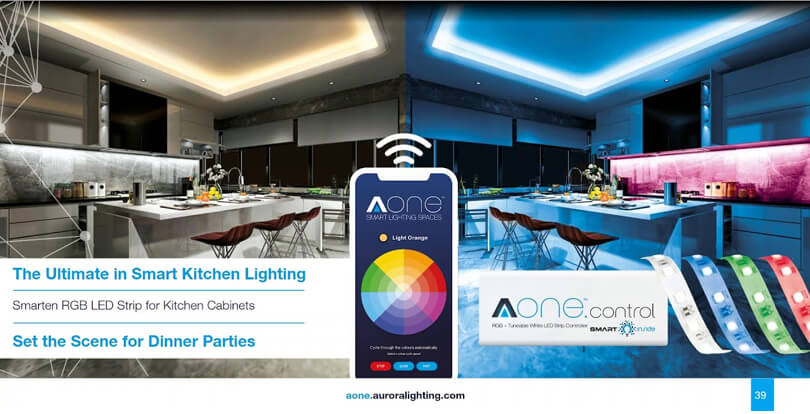
Smart Light Strips
Smart light strips use several bulbs to light up larger spaces. This type of lighting works best in smaller enclosed spaces such as on the staircase, around your TV, or under kitchen areas.
Smart strip lighting comes in multiple colour options, and you can choose from simple white or other more eclectic colour schemes. Due to the various colour options, light strips are also commonly used for mood lighting.
It is important to note that light strips don’t provide high-intensity brightness; they are mainly used to highlight the area they are placed in.
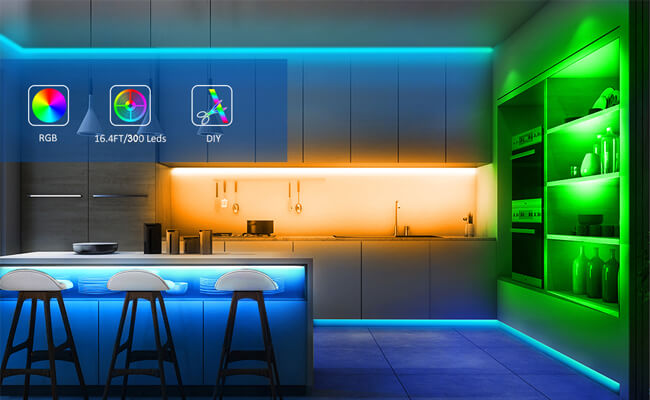
Smart Enclosed Lights
Smart enclosed lighting is specially manufactured to fit recessed or enclosed lighting fixtures. These lights work well with lamp devices such as a desk or floor lamp.
Enclosed are ideal for such fixtures because of the heat component. Bulbs in enclosed lighting release heat which can damage your equipment; it is important that you get enclosed light bulbs to ensure there is no damage to your light fixture.
However, you can use a regular smart bulb instead of an enclosed light to illuminate your lamps.
Smart Lighting Colours
One of the most inventive features of smart lighting is the wide range of colour choices available to you. The majority of standard light bulbs only offer one colour. These bulbs usually offer a warm white shade that looks orange or a cooler and sharper blue colour.
These conventional bulbs often fall somewhere in the middle of the Kelvin colour temperature scale. However, with smart bulbs, you can explore a wide array of colour temperatures.
If you prefer standard colours, you can still get a regular white colour, or you can choose from various shades of white depending on your lighting needs.
Some smart lights offer a setting called “white ambiance” that changes the colour temperature depending on your needs. For instance, you can choose a warmer white temperature when you want to create a relaxing atmosphere, or you can opt for a cooler white when you can get intense illumination.
To access the completely RGB spectrum lighting, you will need to purchase the more expensive option of smart lighting. These higher-end smart lights offer a full range of colour customisation.
You can choose from potentially 16 million colour combinations and codes. RGB lights have several benefits as you can use them for several modern lighting setups. You can create mood lighting for specific rooms and purposes.
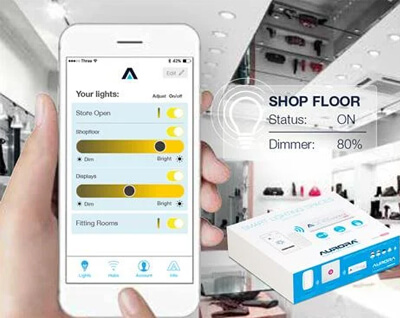
What Are The Benefits Of Smart Lights?
Lighting is an incredible part of your home, which is why when you choose smart lighting, you should look for lights that provide convenience and comfort.
Here are all the important benefits of smart lights.
Improved Convenience
Smart products, including smart lights, are well-known for allowing a higher level of convenience. With these lights, you have improved control and better functionality of your home’s lighting systems.
Most smart lights can be easily set up with your phone, so you can control your lights even when you are away from your home. Other conveniences include setting up a schedule for your lights depending on your needs.
You can schedule your lights to turn on at sunset and turn off at sunrise. This removes the need for you to get up and turn off all the lights in the morning. Some smart lighting also allows voice control, meaning you simply utter a command, and your lighting will turn on/off.
Smart lights and motion sensors will automatically turn on when they detect movement. Such lights work well in areas that don’t get frequent use.
For example, you can put motion sensor lighting on the staircase so that when you walk up/down the stairs, your path will be illuminated. Alternatively, some smart lighting uses light sensors to turn on/off based on the lighting outdoors automatically.
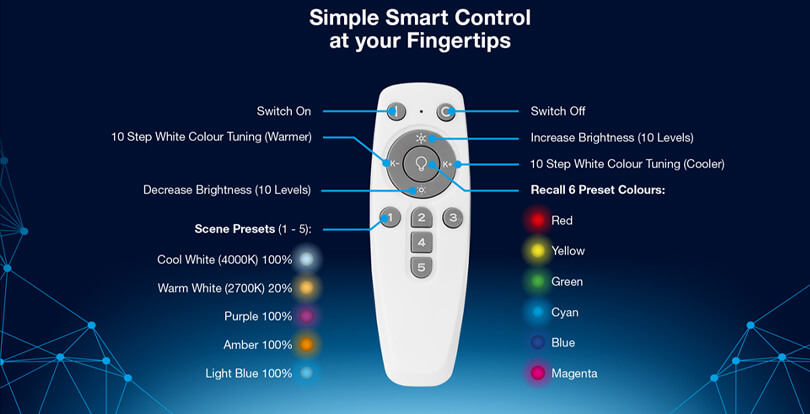
Energy Efficiency And Savings
One of the most crucial benefits of smart lighting products is that with increased control, you can significantly reduce your energy consumption. If you leave your light turned on, a smart bulb connected with an app will send you an alert.
Once you receive the alert, you can simply turn the light off from the app instead of going back home. As mentioned earlier, almost all smart lighting products are made from LED bulbs to ensure efficient energy use.
LED bulbs are 75% more efficient than conventional light bulbs, which means you will see major savings on your energy bills in the long run. LEDs also have a longer lifespan compared to incandescent light bulbs; therefore, you will also save money on maintenance and replacement costs.
The exact amount you would save from smart lights depends on the manual light bulbs you need and how long they remain operational. Despite these factors, every homeowner will see some level of savings by installing smart lights.
Safety And Security
Smart lights also ensure the safety and security of your household. You can schedule your lights to turn on at specific times when you are away from home. This will give the appearance that someone is at home, keeping intruders away. Smart lights are also a great way to reduce accidents from the darkness.
With motion-sensing lights, the bulbs will automatically turn on to help you illuminate your path. You can also experience these benefits with smart outdoor lighting; the sensor will automatically trigger the outdoor light to turn on without the need for any wiring.
Health And Wellness
Some smart lights also have the rare benefit of positively impacting your health. Blue light is well-known as a disruptor of our natural circadian rhythms.
Many manufacturers are developing smart lights with hues that do not disrupt your health and wellness. You can also programme your smart lighting to increase in intensity to avoid experiencing jarring light levels gradually.
Which Networks Work With Smart Lighting?
While Wi-Fi is commonly used with smart lighting, there are a number of different networks available that are compatible with smart lights.
Here are the different networks and their benefits.
Wi-Fi
To get started with your smart lighting, you only need your home’s regular Wi-Fi network. The smart light uses your Wi-Fi signal and router as a method of communication. These systems are essential for the function of your smart lighting.
If you ask your smartphone to turn off the lights, it sends a signal to your home’s wireless connection to carry out the command. There are several benefits of using a Wi-Fi network. Most household Wi-Fis provide strong coverage. Therefore, you will suffer fewer connectivity issues with your light controls.
Household Wi-Fis also are equipped to handle several devices, which means you don’t need to purchase an extra hub. However, there is one main limitation of Wi-Fi - unreliability. If your Wi-Fi is down, you will be unable to control your lighting.
Despite this drawback, if you experience no outages with your Wi-Fi, you will have a seamless connection with your smart lighting.
Bluetooth
Modern smart bulbs often use Bluetooth technology instead of Wi-Fi. Bluetooth is another network that does not require a hub, as your smartphone directly connects with the bulb to provide control. However, there are certain drawbacks to using a Bluetooth network.
This network offers a very low bandwidth range which means you can only communicate with very few light bulbs at once. For instance, if you have smart bulbs throughout your house, you will only be able to control bulbs in rooms or sections of the house at once.
Bluetooth also doesn’t allow you to group all your light bulbs; therefore, you can’t switch off all the lights in a room simultaneously.
Zigbee
Apart from smart lighting, you can also connect smart speakers with a Zigbee network giving you more ways to create a connected home.
Zigbee is a self-forming mesh network which means that when you turn the power on a Zigbee compatible device, it will automatically reach out and connect with other Zigbee-connected devices in the range.
With the Zigbee network, each device acts as a mini-hub to transport your messages from the app to other appliances. This process helps improve the range of the network and the connected devices.
Zigbee networks also bear some similarities to Wi-Fi in that they operate on a 2.4Ghz radio frequency, but there is a small chance for interference between the two networks. However, this occurrence is quite rare, and you do not need a separate hub.
Z-Wave
Z-Wave is another network system that works just like Zigbee. This system is mainly used for smart sensor devices. Z-wave requires its own hub to operate, and it functions separately from your Wi-Fi network.
Z-wave uses an 800-900 Mhz range which; means there will be no inference between your Wi-Fi and this protocol. If you have any other devices in your household that also use Z-wave, you can connect them together and increase their range. However, Z-wave is very rarely used with smart lights.
Do You Need A Smart Hub For Smart Lighting?
If you are on the market for smart lights, you might think about purchasing a smart hub as well. In earlier smart lighting models, a hub was a requirement for connectivity.
Nowadays, new smart light models don’t need such a device anymore. However, you can still purchase a smart hub as it will unlock a whole new range of options for controlling your lights and other smart appliances.
So, what is a smart hub? This device is a small kit that connects all the smart luminaries in your household to your Wi-Fi. Once connected, the hub acts as a communication center between the smartphone app and the device. When you use a hub alongside a smart bulb, you will send commands to the hub instead of the lights.
For example, if you want to change the brightness of your bulb, you will make the adjustment on the app, which will send the signal to the hub. Afterward, the hub will transfer this command to the light.
A smart hub is also a great way to group all your light bulbs together for complete control over your lighting. As mentioned before, Bluetooth does not let you group light bulbs together; however, if you use a smart hub, you can group bulbs on a Bluetooth network. Even with other networks, a smart hub gives you much better organisational control over your lighting.
Do Smart Lights Work With A Home Assistant?
If you already own a home assistant device, you can pair your smart lights with it for even more access and convenience. Home assistants take your smart lights to the next level and offer next-level capabilities.
With an Alexa or Google device, you can simply send a voice command and have all your lights turn on or off. This process is much faster than opening up an app on your smartphone. Depending on your Wi-Fi connection speed, this action can be done much quicker.
Organisation also becomes much easier with a home assistant device. A smart assistant hub allows you to set room names for your light settings. For example, if you ask your home assistant to turn on the preset living room lights, you will immediately get your desired brightness settings.
You can also combine your smart lights and home assistant with other smart devices for better home automation and customisation.

What Are The Best Smart Lights On The Market?
There are several great smart lights on the market; however, it can be difficult to know which products are reliable and efficient.
At Meteor Electrical, browse through our Aurora lighting range to find some of the best smart lights on the market. Aurora lighting is a global manufacturer of luminaries, and their products are high-quality and long-lasting. Here are some of the best smart lights Aurora has to offer.
Aurora 8W GLS Dimmable Smart Lamp
If you are looking for a singular bulb, you should go for the 8W dimmable smart lamp from Aurora. This smart bulb uses Bluetooth connectivity which means you don’t need a smart hub to power your light.
This smart bulb is simple and cost-effective, and you will start seeing benefits after the first use. With this lamp, you get a remote control to access your lighting easily. This bulb offers 6 RGB colours, and it is made from LED, which means a longer lifespan of 25,000 hours.
These 8W lamps provide 160 degrees of beam angle, and you can have 5 pre-programmed scenes.
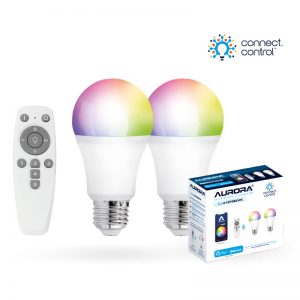
AOne Smart Kit 4x5W Dimmable LED Smart Lamps
For a smart light kit, Aurora offers the AOne smart kit with four 5W dimmable LED smart lights. These lights have a colour temperature range between 2700-5000K, and they offer dimming options between 5-100%.
For those looking to start their smart home journey, this is the perfect kit to start with. This kit also works with Bluetooth connectivity, and you don’t need any external devices to get started. To start using these lamps, simply connect the light fittings, turn on the provided remote, and begin controlling the smart lights immediately.
Apart from Bluetooth, you can also use the Aurora BLE app to control your lighting.
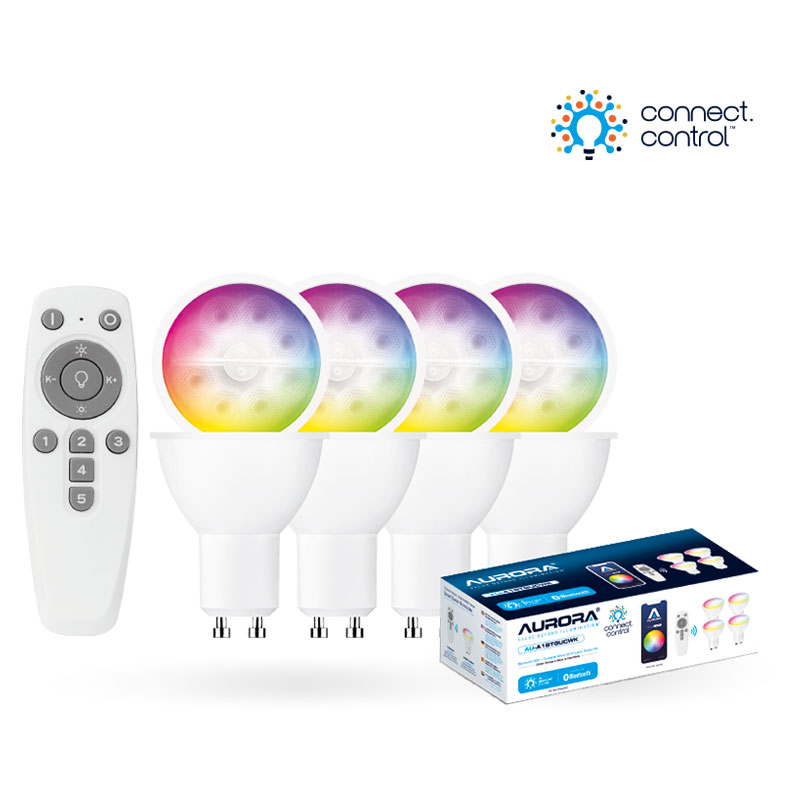
AOne Smart Kit 5m RGBCX LED Smart Light Strip
If you want to opt for strip lighting instead of a regular light bulb, Aurora has an option for you. The AOne smart kit strip lighting is another great entry-level smart home technology that does not require a hub.
As with other Aurora lighting, you get a handheld remote to control your light settings. This kit comes with 5 meters of strip lights which can be cut at every 167 mm. These lights can recall 6 RGB colours and come with a colour temperature range between 2700-5000K.
This kit also comes with 10 mounting clips for quicker installation and added safety.
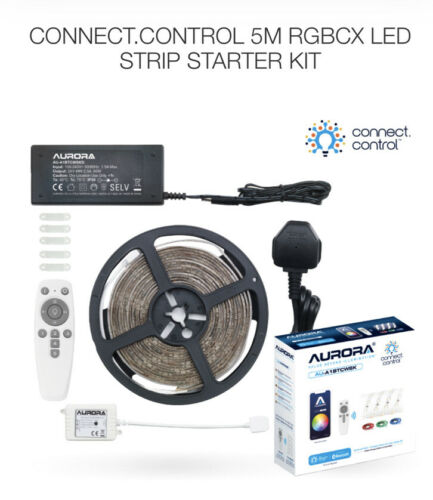
How To Install Smart Lighting
Installing smart lighting is very simple and uncomplicated. For these lights, you don’t need any special fitting, base, or wiring. The smart light installation also does not require any extra wattage or power.
To start using your smart luminaries, all you need to do is replace your standard light bulbs. However, there is one important factor you must consider for installation - the strength of your Wi-Fi connection. If you have a low-grade router or a large home, your bulb will suffer some connectivity issues.
If you add multiple bulbs to such a network, there will be more strain on your connection. When smart bulbs connect with a wireless network, they take up bandwidth. A standard home has multiple devices already connected to your network. For example, you might have your smartphone and a few laptops connected to your Wi-Fi.
By adding additional 10 light bulbs, you will increase the strain on your network system. If you run into such a problem, you can benefit from installing an economical router that provides free internet packages.
Alternatively, you can upgrade your router system to handle multiple devices. If you don’t have multiple devices but live in a large home, consider adding a Wi-Fi extender to boost your network’s capability and successfully use your light bulbs.
How Many Bulbs Do You Need?
If you are starting with smart bulbs, you might be tempted to replace every single light fitting in your home. However, you don’t need to do this to create a smart home. It is recommended that you only swap out frequently used light bulbs with smart lighting.
You can also replace bulbs that are constantly being switched on or off. If there is an area in your household that doesn’t need frequent lighting, it is best not to add smart lighting here. However, if your budget permits, you can also add smart lighting in the outdoor areas of your homes.
If you are considering using smart outdoor lighting, look for bulbs that are specially designed to withstand outdoor weather elements. Also, consider the use of a motion sensor to increase the capabilities of your smart outdoor lighting.
How Long Does Smart Lighting Last?
Since most smart lighting has high upfront costs, you might wonder if you need to replace these bulbs often as you would conventional light bulbs.
This is not the case with smart lighting. Almost all smart lighting is made with LED lighting technology. These smart bulbs are far more durable than incandescent light bulbs and will help you save more money in the long run due to minimal replacement costs.
Final Takeaway
If you want to start building a smart home, smart lighting is a great way to make small changes. These lights require minimal installation help, and you can start seeing benefits immediately.

